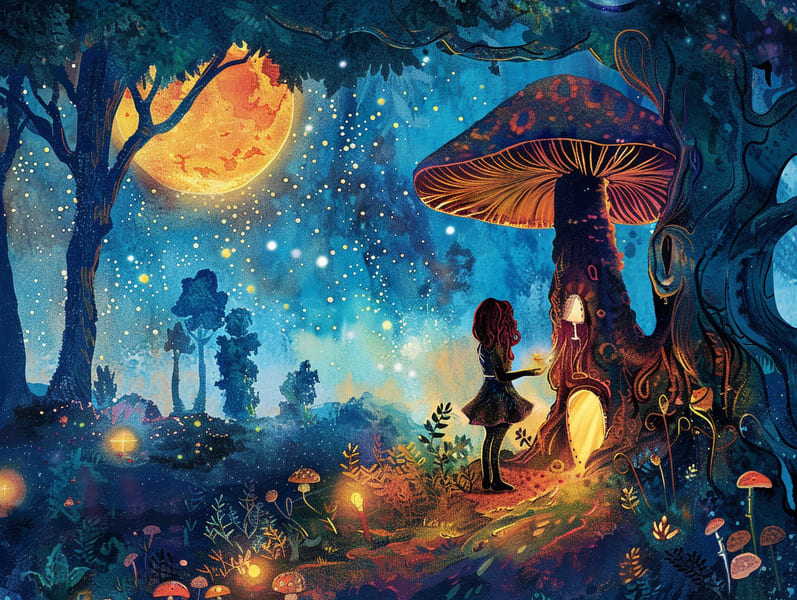
Ancient fairy tales have old origins. These narratives have been passed down from one generation to the next centuries before they were ever documented. They emerged from a variety of backgrounds, including Indigenous traditions. They were initially conveyed among adults, often carrying themes and messages reflective of the societal norms and beliefs of the time.
The Grimm brothers, the two Grimm brothers, were among the first to assemble many of these beloved narratives. Their collection, "Grimm's Folk Tales," included classics like "Cinderella," "The Bread Crumb Trail," and "Snow-White and Rose-Red," which have since become mainstays in the world of traditional fairy tales. Similarly, Hans Andersen's fanciful stories, such as "The Mermaid," and "The Ugly Duckling," have captured hearts worldwide, establishing their place in the pantheon of treasured fairy tales.
Despite being ancient, traditional fairy tales remain as important as ever, especially as children's bedtime stories. These enchanting tales are now available in many formats, including artistically illustrated books, captivating animations, and digital storybooks.
Their persistent charm can be connected to several charming aspects:
Life Lessons: Timeless fairy tales often offer important moral lessons. Fairy tales like "The Boy Who Cried Wolf" teach the virtue of integrity, while "The Tale of the Tortoise and the Hare" exemplify the benefits of persistence and unassuming nature. These tales offer young readers clear distinctions between correct and incorrect, helping to shape their moral compass in a mild yet impactful way.
Warmth and Understanding: Fairy tales frequently depict heroines facing challenges and problems, motivating readers to relate with their struggles and celebrate their triumphs. For instance, "Beauty and Her Beast" emphasizes the benefit of seeing beyond looks to comprehend the true being of a individual, nurturing empathy and discernment.
Cultural Appreciation: Many traditional fairy tales are steeped in the cultural contexts from which they sprang. Reading these tales can provide illuminating insights into different historical contexts, strengthening a sense of world appreciation and understanding.
Inventiveness and Imagination: The enchanted elements in fairy tales—spells and potions—kindle children’s creativity. These tales transport readers to imaginary realms, invigorating imaginative thinking and a sense of marvel that lasts a lifetime.
Timeless fairy tales are not only magical but also illuminating. They function as charming tools in promoting various brain and heart skills in children. When ancient fairy tales are narrated, they advance language acquisition by offering new word meanings and sophisticated sentence structures. This practice also cultivates hearing abilities and attention, as young readers follow the story, anticipating to see what happens next.
Furthermore, analyzing the themes and characters of fairy tales can strengthen analytical skills and evaluative skills. Young readers are educated to spot patterns, anticipate outcomes, and comprehend cause and effect. These analyses also assist kids utter their thoughts and feelings, enhancing their emotional intelligence.
In today’s high-tech era, the abundance of digital storybooks has made these tales more accessible than ever. Internet sites and online apps give vast collections of old fairy tales that can be looked at or heard anytime, anywhere. Fairy tales read out loud are particularly in demand, supplying an interactive way for children to delight in these delightful tales. Read-aloud books and read-aloud videos guide characters and settings to life, often joined by whimsical harmonies and musical scores that enhance the narrative journey.
The timeless fascination of timeless fairy tales lies in their ability to modify to modern times while sustaining their core messages. Contemporary updates of these stories often incorporate more diverse characters and modern settings, making them meaningful to today’s audience. However, the essential messages of valor, benevolence, and fair play remain unchanged, continuing to influence young listeners classic fairy tales of all ages.
Fairy tales also offer a sense of reassurance and knownness. They allow a ordered narrative with a straightforward beginning, middle, and end, often ending with the closure of conflicts and the triumph of honesty over deceit. This reliability can be reassuring for young ones, extending a sense of invariability in an shifting world.
Classic fairy tales continue to mesmerize and train new generations, maintaining their fascination and applicability in modern society. As bedtime stories for kids, they put forth a perfect blend of allure and teaching, nurturing moral values, empathy, and creativity. The presence of web-based fairy tales and the in demand status of fairy tales spoken ratify that these old stories remain within reach to new generations.
By sustaining and passing on these stories, we continue to esteem the rich tapestry of creativity and cultural heritage. Whether you are exploring a artistically illustrated book, delving into a virtual collection, or listening on an audio story, the splendor of traditional fairy tales is always within reach. These narratives emphasize of the ageless magic of stories and its ability to join us across time and space.
Be it you are reading a colorful picture book, seeing a digital library, or listening on an read-aloud story, the spell of bedtime fairy tales is always within reach.
These narratives demonstrate of the unchanging nature of fairy tales and its ability to tie us across centuries and lands, creating a bond that delights and instructs alike.
 Andrea Barber Then & Now!
Andrea Barber Then & Now! Brandy Then & Now!
Brandy Then & Now! Katie Holmes Then & Now!
Katie Holmes Then & Now! Melissa Joan Hart Then & Now!
Melissa Joan Hart Then & Now! Jeri Ryan Then & Now!
Jeri Ryan Then & Now!